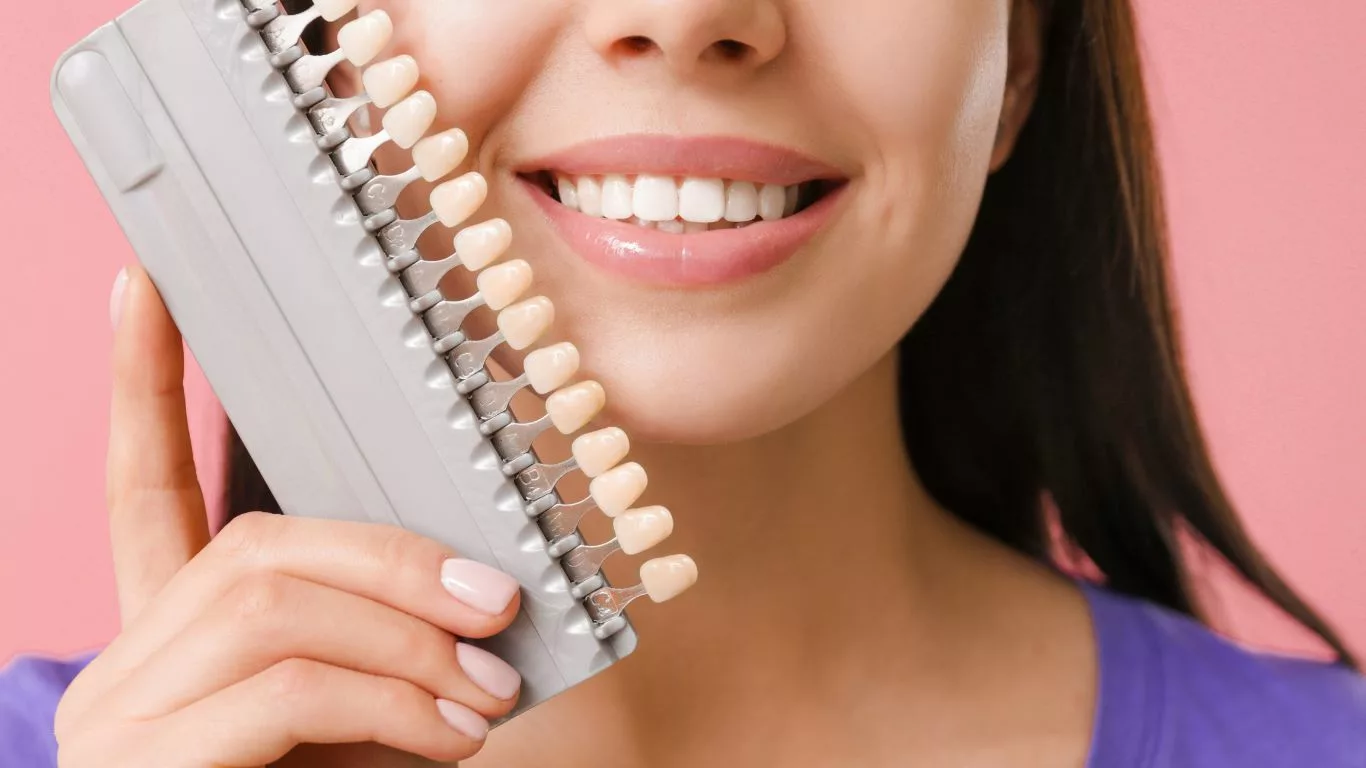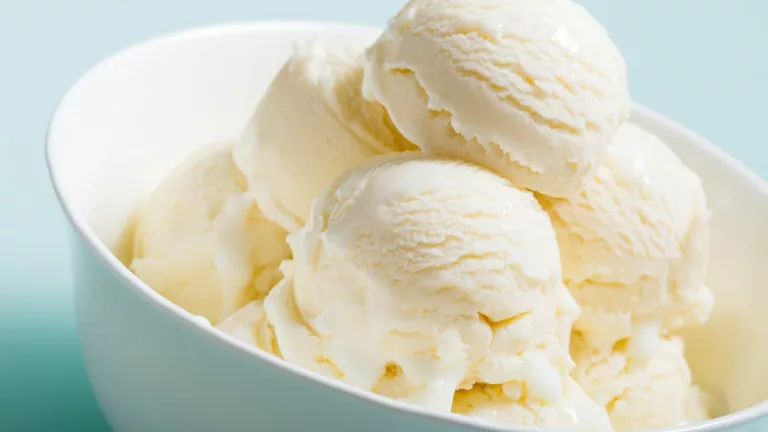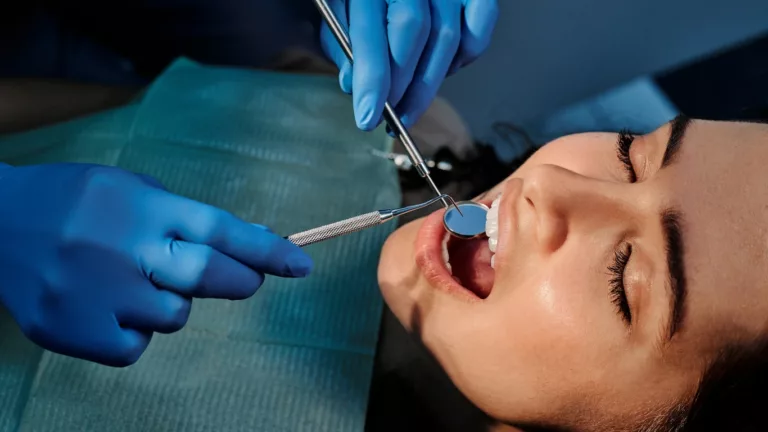Can Porcelain Veneers Stain? Unveiling the Truth
Last Updated on April 30, 2024 by Camellia Wulansari
Explore the potential for staining on porcelain veneers. Learn about prevention tips, maintenance strategies, and factors influencing veneer discoloration in our comprehensive guide.
Porcelain veneers have become a popular choice for achieving a flawless smile, offering durability, natural aesthetics, and stain resistance. However, the question remains: Can porcelain veneers stain? In this detailed examination, we delve into the truth behind veneer staining, offering insights into prevention techniques, maintenance practices, and the various factors that can influence veneer discoloration.
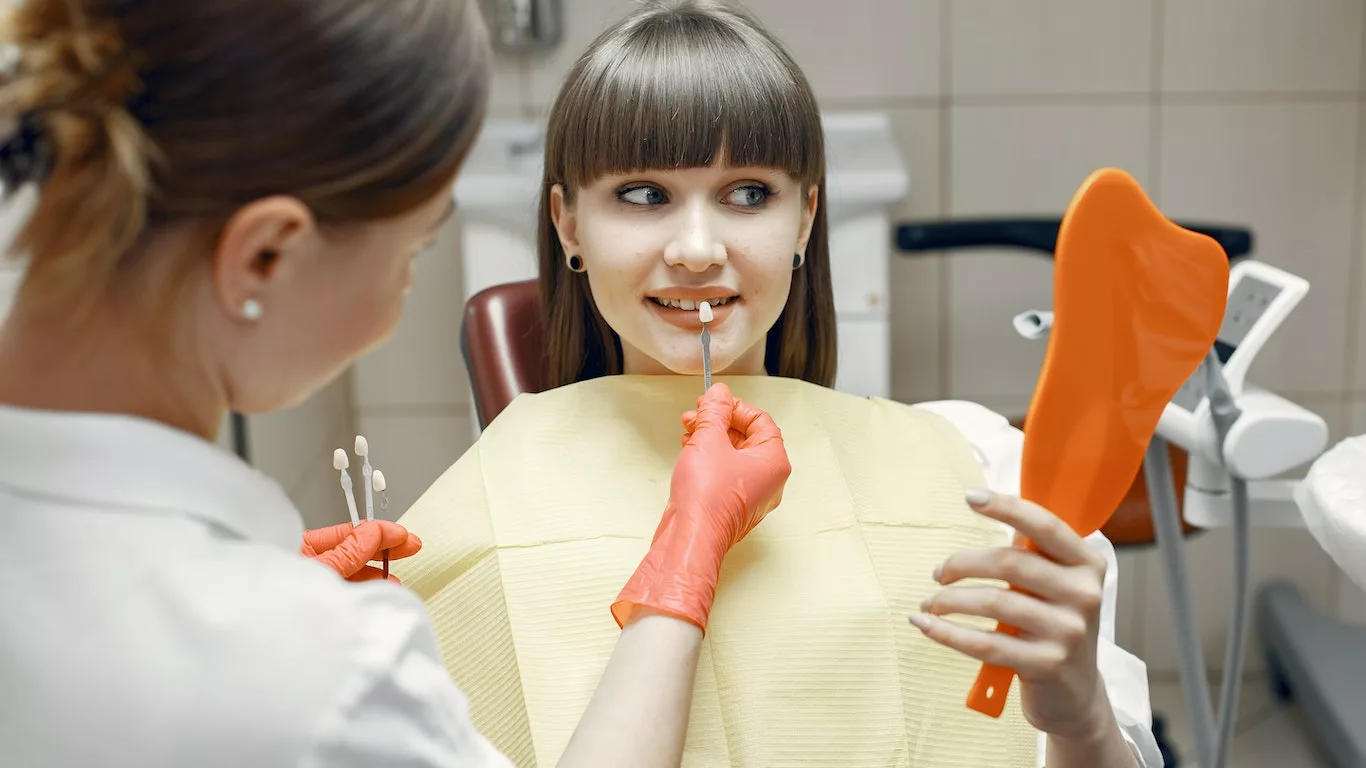
Understanding Porcelain Veneers: Enhancing Smiles with Precision
Porcelain veneers stand as marvels of modern cosmetic dentistry, meticulously crafted to transform smiles by concealing imperfections such as discoloration, chips, or misalignment. These thin shells of dental ceramic are custom-designed to cover the front surface of teeth, offering patients a natural-looking and durable solution to achieve their desired aesthetic goals.
Delving into Veneer Composition
Crafted from high-quality porcelain, veneers possess remarkable stain-resistant properties, elevating them as a preferred choice for smile enhancement procedures. Their composition not only ensures resilience against discoloration but also mimics the translucency and texture of natural tooth enamel, seamlessly blending with surrounding teeth for a harmonious smile.
Unveiling the Truth: Can Porcelain Veneers Stain?
Despite their inherent resistance to staining compared to natural tooth enamel, porcelain veneers are not entirely impervious to discoloration. Various factors can contribute to staining on veneers, including lifestyle choices and oral hygiene practices:
- Pigmented Foods and Beverages: Indulging in deeply pigmented substances like coffee, tea, red wine, and berries can gradually lead to surface staining on porcelain veneers over time, compromising their pristine appearance.
- Tobacco Use: The habit of smoking or using tobacco products introduces tar and nicotine residues, which may adhere to veneer surfaces, resulting in unsightly yellowing or discoloration.
- Poor Oral Hygiene: Neglecting essential oral hygiene practices such as brushing, flossing, and regular dental cleanings can pave the way for plaque and tartar buildup, increasing the susceptibility of veneers to surface staining.
- Abrasive Toothpaste: Certain toothpaste formulations may contain abrasive ingredients that, when used over time, can create micro-scratches on veneer surfaces, rendering them more prone to staining and diminishing their luster.

Prevention and Maintenance Tips for Preserving Porcelain Veneers
Ensuring the longevity and aesthetic appeal of your porcelain veneers involves proactive care and maintenance. Consider implementing the following comprehensive tips to minimize the risk of staining and maintain the pristine condition of your veneers:
1. Practice Excellent Oral Hygiene
Maintaining a consistent oral hygiene regimen is paramount for the health and appearance of your veneers. Follow these steps:
- Brush at least twice a day using a soft-bristled toothbrush and non-abrasive toothpaste. Gentle brushing helps remove plaque and prevent surface stains without compromising the integrity of your veneers.
- Floss daily to remove plaque and food particles from between your teeth and along the gumline. Proper flossing prevents plaque buildup, which can diminish the brilliance of your veneers over time.
- Schedule regular dental check-ups and cleanings every six months or as recommended by your dentist. Professional cleanings remove stubborn plaque and tartar that may accumulate around the edges of your veneers, ensuring optimal oral health.
2. Limit Staining Substances
Certain foods and beverages can contribute to surface staining on porcelain veneers. Take proactive measures to minimize their impact:
- Reduce consumption of highly pigmented foods and beverages, such as coffee, tea, red wine, and berries. When indulging in these items, consider using a straw to minimize direct contact with your veneers.
- Rinse your mouth with water after consuming staining substances to help wash away residual pigments and reduce their adherence to veneer surfaces.
- Consider using a whitening mouthwash specifically formulated to help maintain the brightness of your smile and minimize the risk of surface stains on veneers.
3. Avoid Tobacco Products
Tobacco use poses significant risks to both your oral health and the appearance of your veneers. Take steps to eliminate tobacco products from your lifestyle:
- Quit smoking or using smokeless tobacco to prevent tar and nicotine residues from adhering to your veneers. These substances can lead to unsightly yellowing or discoloration over time.
- Seek support from healthcare professionals or cessation programs to successfully overcome tobacco addiction and safeguard the beauty of your smile.
4. Choose Professional Whitening
While you may desire a brighter smile, it’s essential to approach teeth whitening with caution to avoid damaging your veneers. Opt for professional whitening treatments recommended by your dentist:
- Consult with your dentist to determine the most suitable whitening approach for your unique dental needs and the specific characteristics of your veneers.
- Avoid over-the-counter whitening products that may contain abrasive agents or harsh chemicals capable of compromising the integrity of your veneers and causing irreversible damage.
- Undergo professional teeth whitening treatments under the supervision of a qualified dental professional to achieve safe, effective, and long-lasting results without jeopardizing the health or appearance of your veneers.

Consultation with Your Dentist: The Importance of Professional Evaluation
If you notice any signs of staining or discoloration on your porcelain veneers, it’s essential to promptly schedule a consultation with your dentist for a comprehensive evaluation. Your dentist possesses the expertise and tools necessary to assess the condition of your veneers accurately. During your appointment, your dentist will:
- Examine the extent of staining: Your dentist will visually inspect your veneers and may use specialized tools or imaging techniques to assess the severity of staining or discoloration.
- Evaluate veneer integrity: In addition to assessing surface staining, your dentist will examine the overall integrity of your veneers to determine if any damage or deterioration has occurred.
- Discuss treatment options: Based on the evaluation results, your dentist will discuss appropriate treatment options tailored to address your specific concerns. These options may include professional cleaning, polishing, or, in severe cases, veneer replacement.
Professional Cleaning and Polishing
If the staining on your veneers is superficial and limited, your dentist may recommend professional cleaning and polishing to remove surface discoloration and restore their original luster. During this procedure, your dentist will use specialized tools and techniques to gently remove stains and plaque buildup without compromising the integrity of the veneers.
Veneer Replacement
In cases where staining is extensive, resistant to cleaning efforts, or accompanied by veneer damage, your dentist may recommend veneer replacement. This procedure involves removing the existing veneers and replacing them with new ones to restore both aesthetics and functionality. Your dentist will work closely with you to select the appropriate veneer shade, shape, and size to achieve optimal results.
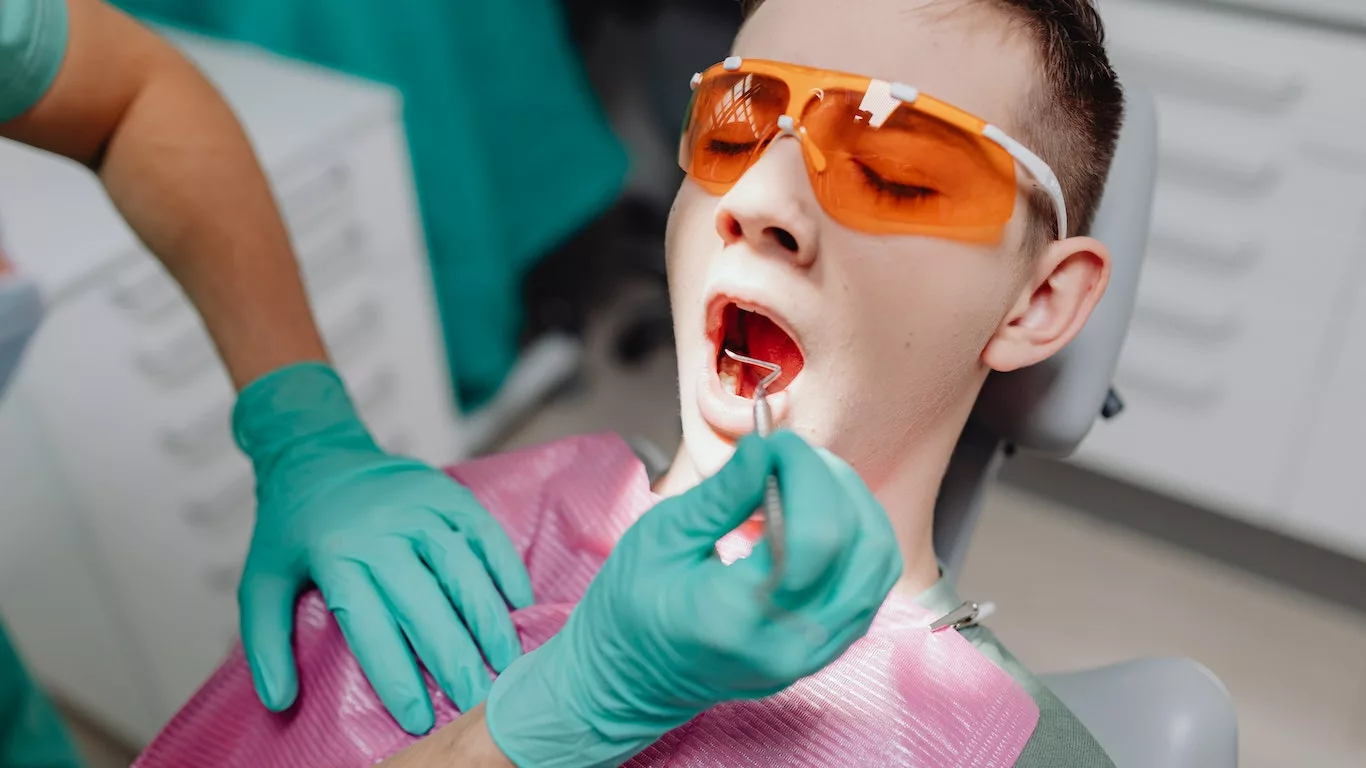
Conclusion
While porcelain veneers offer excellent resistance to staining compared to natural teeth, they are not entirely immune to discoloration. By adopting proactive preventive measures, practicing good oral hygiene, and seeking professional dental care, you can minimize the risk of staining and maintain the beauty of your veneers for years to come.
Appendices
References
For further exploration of porcelain veneers and their susceptibility to staining, consider reviewing the following references:
- Peumans, M., & Van Meerbeek, B. (2000). Porcelain Veneers: A Review of the Literature. Journal of Dentistry, 28(3), 163–177. Read Article
- Seghi, R. R., Johnston, W. M., & O’Brien, W. J. (1996). Spectrophotometric Analysis of Color Differences between Porcelain Veneer Systems. The Journal of Prosthetic Dentistry, 76(6), 522–527. Read Article
- Clark, D. J., Sheets, C. G., & Paquette, J. M. (1988). Clinical Performance of Porcelain Laminate Veneers. Compendium of Continuing Education in Dentistry (Jamesburg, N.J. : 1995), 9(1), 32–34, 36, 38 passim. Read Article
FAQs
Here are some frequently asked questions about porcelain veneers and staining prevention:
- Can porcelain veneers be whitened if they stain? Yes, professional cleaning and polishing can help remove surface stains from porcelain veneers. In some cases, replacing the veneers may be necessary for extensive staining.
- How long do porcelain veneers last without staining? With proper care and maintenance, porcelain veneers can maintain their appearance for 10 to 15 years or longer before requiring replacement due to staining or other issues.
- Are there specific foods or drinks to avoid to prevent veneer staining? While there are no strict dietary restrictions, minimizing consumption of highly pigmented foods and beverages like coffee, tea, and red wine can help reduce the risk of staining on porcelain veneers.
Related Table
Here’s a summary table highlighting key factors influencing porcelain veneer staining and preventive strategies:
| Factor | Impact | Preventive Strategy |
|---|---|---|
| Pigmented Foods and Beverages | Potential surface staining | Limit consumption or rinse mouth after consumption |
| Tobacco Use | Yellowing or discoloration | Avoid smoking or using tobacco products |
| Poor Oral Hygiene | Plaque and tartar buildup | Maintain regular brushing, flossing, and dental cleanings |
| Abrasive Toothpaste | Micro-scratches on veneer surfaces | Use non-abrasive toothpaste |
Note: Consult your dentist for personalized recommendations based on your dental health status and veneer condition.
Disclaimer: The information provided in this article is for educational and informational purposes only. It is not intended to be a substitute for professional dental advice, diagnosis, or treatment. Always seek the advice of your dentist or other qualified healthcare provider with any questions you may have regarding dental conditions. Never disregard professional dental advice or delay in seeking it because of something you have read in this article. Reliance on any information provided in this article is solely at your own risk.

Camellia Wulansari is a dedicated Medical Assistant at a local clinic and a passionate health writer at Healthusias.com. With years of hands-on experience in patient care and a deep interest in preventive medicine, she bridges the gap between clinical knowledge and accessible health information. Camellia specializes in writing about digestive health, chronic conditions like GERD and hypertension, respiratory issues, and autoimmune diseases, aiming to empower readers with practical, easy-to-understand insights. When she’s not assisting patients or writing, you’ll find her enjoying quiet mornings with coffee and a medical journal in hand—or jamming to her favorite metal band, Lamb of God.
